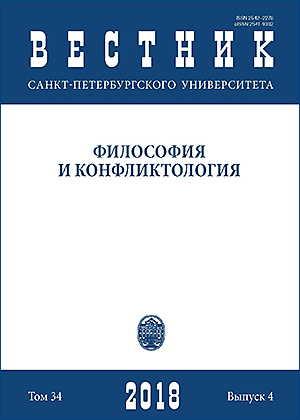Language as Eigenform: Semiotics in the search of a meaning
DOI:
https://doi.org/10.21638/spbu17.2018.402Аннотация
Ключевые слова:
Eigenform, cобственная форма, несобственная форма, язык, значение, семиотика, семиозис, референция, самореференция, рекурсия, знак
Скачивания
Библиографические ссылки
Загрузки
Опубликован
Как цитировать
Выпуск
Раздел
Лицензия
Статьи журнала «Вестник Санкт-Петербургского университета. Философия и конфликтология» находятся в открытом доступе и распространяются в соответствии с условиями Лицензионного Договора с Санкт-Петербургским государственным университетом, который бесплатно предоставляет авторам неограниченное распространение и самостоятельное архивирование.






